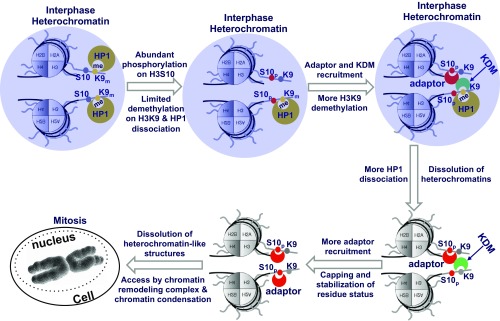Fig. 6.
A hypothetical model of the dynamic coupling between H3S10p and H3K9me3 that regulates the transition from interphase to mitosis during a cell cycle. We hypothesize that heterochromatin-like structures can be facilitated by liquid phase separation via HP1 accumulation in association with H3K9me3 at H3 tails (36, 37). At the start of the transition from G2 to M phase, the abundant Aurora kinase B can cause rapid phosphorylation of H3S10 that can recruit adaptors such as 14-3-3 (57, 58). The consequently facilitated recruitment of demethylases and repulsion of methyltransferases can promote the demethylation of H3K9me3 and subsequent dissociation of HP1 from H3 tails. The resulted dissolution of heterochromatin-like structures should allow the enhanced access of chromatin remodeling complex that can help the timely reorganization and condensation of chromatin for mitosis. Purple circle represents heterochromatin-like structures and regions.

